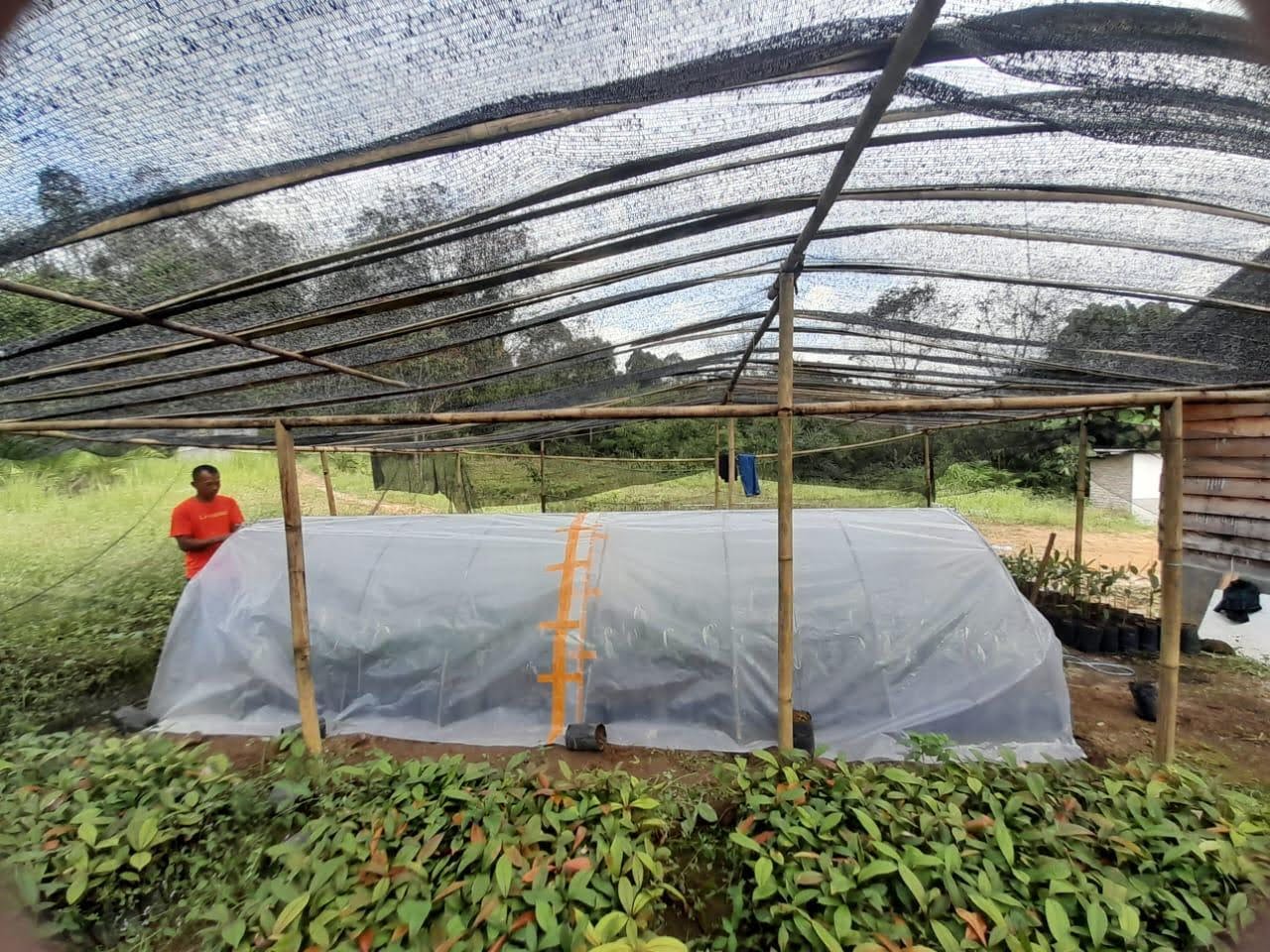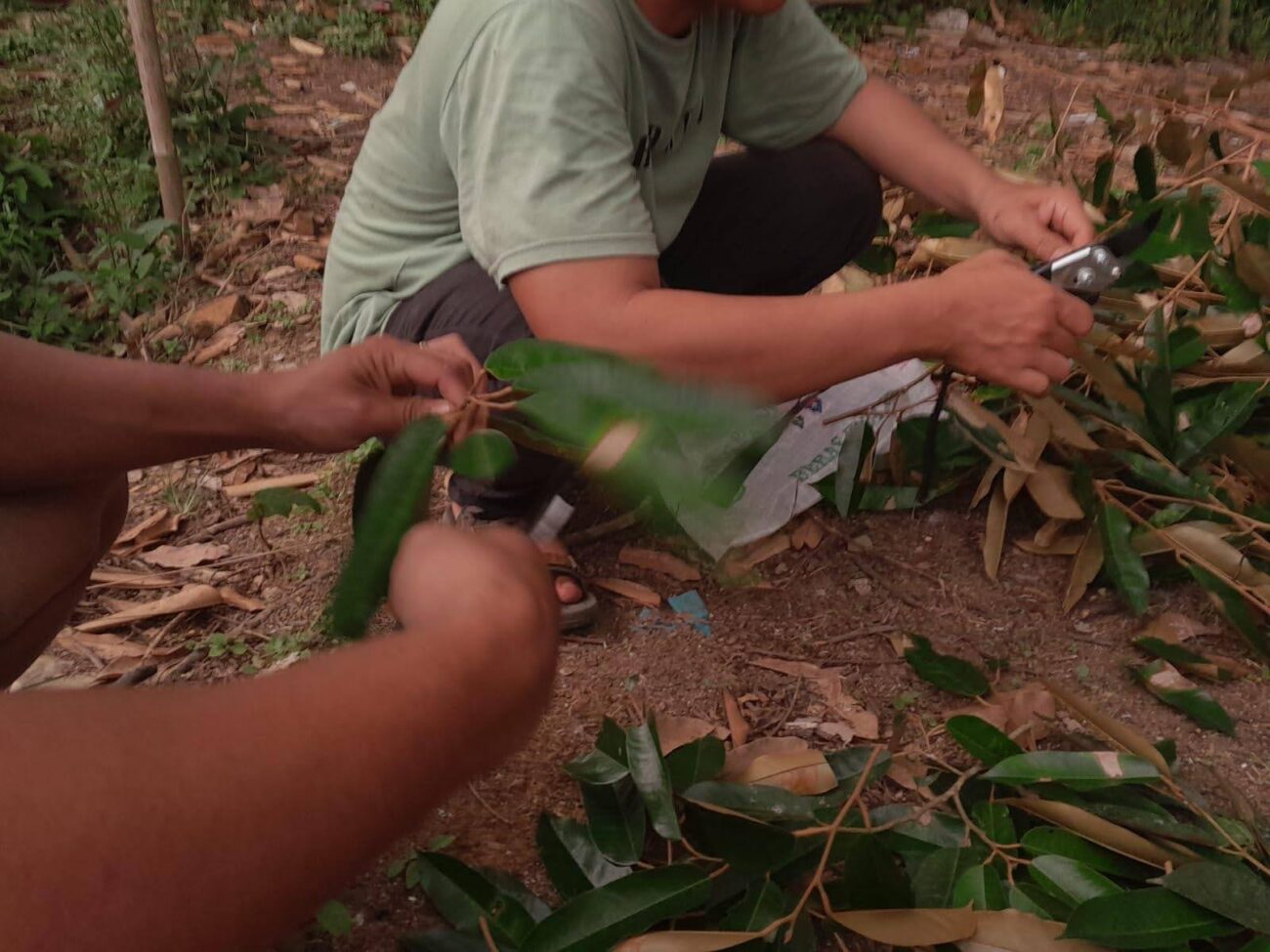
Before and after rewilding at Cinta Raja
Rewilding is a practice that gives hope to many people throughout the world, and it can be hugely inspiring to see what happens when that hope turns into action! And when it comes to rewilding in Sumatra, a picture can be worth a thousand words 🤩
Rewilding is the process of natural regeneration, enabling nature to reclaim landscapes and bring biodiversity back to the environment. Rewilding helps landscapes return to life and become places where wild species can thrive and play their own part in the process of natural regeneration.
SOS and our frontline partners in Indonesia have been turning hope into action for decades, and the results are already obvious. The wonder of the tropics is that the speed of natural recovery can be quite surprising!

The effects of just two years’ rewilding at Cinta Raja
In the space of just a few years, cleared landscapes can be thriving and dense with life once more. Within three years, newly planted, fast growing, pioneer trees can already be large enough so that orangutans can make their nests in their canopy.
Sometimes nature may need a helping hand. Our partners may need to clear human interventions like plantations, and plant a careful mix of local species to help nature bed back in. But as you can see from these photos, nature quickly finds her way!
It’s the hope for a thriving future for wild orangutans that drives us and our partners to take action, and seeing the results of that action helps us to find more hope! We hope you enjoy seeing these astounding images too – thank you to every single one of our donors – this is the difference your support is making on the ground, now and into the future. 🦧💚🌳

Seed grafting training in Majanggut II village, West Toba.
The people living in and beside the rainforests of Northern Sumatra are integral to the future of these ecosystems. Likewise, the health of these ecosystems can be integral to thriving communities!
Research and experience has proven that it’s only when conservation efforts are made with, and by, local communities that they have a real chance of succeeding in the long term. The economies of local communities, and the livelihoods of their members, are interwoven with these landscapes, so it’s vital that conservation efforts benefit communities just as much as they do orangutans and nature.
‘Creating the conditions so local communities benefit from conservation outcomes is the most reliable, and the only realistic approach to conservation in orangutan landscapes.’ – Koen Myers, SOS Conservation Director.
Our frontline partners, TaHuKah, have been working closely with villagers at Sibagindar village, West Toba, who have recently secured a Social Forestry License. This allows them to manage the 600-hectare forest beside their village as a community, for the benefit of the village and nature alike.

Seed grafting training in Majanggut II
This Social Forestry programme is an initiative by the Indonesian government, which gives communities a 35-year permit to manage state forests. The programme not only aims to protect forests, but also to improve the welfare for forest-dependent communities. It provides an opportunity to ensure that forest dependent communities are empowered to lead sustainable and effective adaptation to climate change and ecological restoration at the local level.
This is great news, not only for Sibagindar village, but for TaHuKah, and our conservation efforts with them. They’ve already been establishing a nursery to restore more biodiverse forest growth, and in the years to come, the community, alongside partners and government, will further their prosperity and wellbeing, while preserving the ecosystem at the same time.
It’s great to see this hope turn into action, and in time we hope to see more villages in critical orangutan areas take up this initiative and take action to preserve their local environment in ways that empower and benefit them too!

Selamanya Hutan restoration site
A ‘forever forest’ – that’s what the Selamanya Hutan restoration site’s name translates to, and it expresses our vision for this landscape. Situated on the edge of Gunung Leuser National Park, Selamanya Hutan used to be a 320 hectare palm oil plantation. Now, thanks to the hard work of our partners Orangutan Information Centre, who manage the site, it’s returning to its natural splendour, and the wildlife is returning with it!
Last year alone, 70 hectares of land was replanted with over 64,000 saplings. Using effective methods of growing and planting these saplings means they have a high survival rate of over 80%. Previously restored areas get attention too – trees that didn’t survive are replaced, and threats to tree health are managed. For instance, unusually high rainfall allowed weeds to cover the trees, so the OIC team had to apply organic mulch around the trees to protect them.

Sambar deer (Cervus Unicolor)

Sumatran elephant (Elephas maximus sumatranus)
All of this work is worth it! In the last three months alone, camera traps spotted seven wildlife species: wild pig (Sos scrofa), pig-tailed macaque (Macaca nemestrina), Sumatran elephant (Elephas maximus sumatranus, pictured), leopard cat (Prionailurus bengalensis), porcupine (Hystrix brachyura), long-tailed macaque (Macaca fascicularis), sambar deer (Cervus Unicolor, pictured).
The return of these larger species is a positive indicator that the ongoing enrichment and restoration of the forest is having a lasting impact, restoring the ecosystem to a level where wildlife can return and thrive!
All of the work we and our frontline partners do is made possible through your support – please donate to protect wild orangutans and their rainforest homes.
You can help protect Sumatra's Orangutans. Click to get updates
